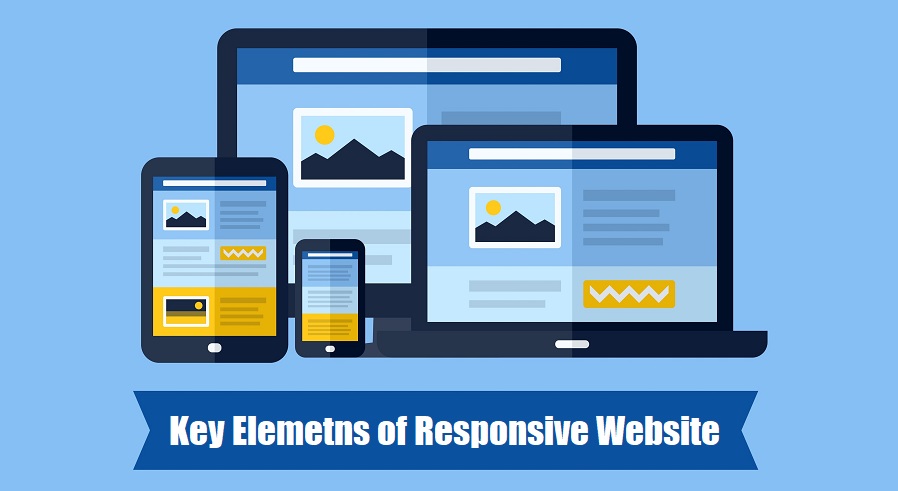What are the 9 Components of Responsive Web Design?


Responsive web design is essential for creating a successful website. It ensures that your website looks great and functions optimally on any device, regardless of its size or type. It uses a combination of HTML, CSS and JavaScript to create flexible layouts that adjust to fit the user’s screen size. Responsive web design also includes features such as fluid grids, flexible images and media queries which allow you to create a unified experience across all devices.
Having a professional and reliable website is essential for success in today’s digital world. Creating a successful website requires both skill and aesthetic appeal.
What is a Responsive Website?
Responsive design is essential for websites to be accessible across all platforms, including laptops, desktops, and mobile devices. Websites should be optimized for use on any device, regardless of size.
Websites need to be responsive for readers and users, giving them an easy-to-read format on any device.
How to Make a Responsive Website?
Responsive websites are achievable with the right tools and techniques, making the process much simpler. Responsive web design creates websites that automatically adjust to fit any screen size, allowing for a seamless user experience. Modern tech like HTML5, CSS3 and JavaScript enable developers to craft visually stunning, user-friendly websites for any device.
Your website can be improved with more responsive features, such as faster loading time, optimized images, and better navigation.
Accessibility:
Accessibility must be prioritized; your site should be usable on all devices. Your website should be easy to navigate and have all relevant info accessible regardless of the device being used, ensuring a professional appearance.
Flexibility:
Images need to be optimized for responsiveness for a successful website. For optimal viewing, images must be scaled to the device screen size. When designing a responsive website, pay close attention to the layout and theme as these have a significant influence on readers.
Fluid grid:
Fluid grids are a responsive design element that adapt to fit different screen sizes. Instead of fixed pixels, modern designs are based on percentage values for greater flexibility. Fluid grids allow elements on a website to adjust in size according to their proportions, rather than being fixed. The dimensions of each element on a screen depend on the size of the display, with columns that can be resized for both width and height.
Whitespace:
Whitespace is an essential element of website design, providing balance and clarity to the visual elements. Screen breathing and avoiding saturation provide a better viewing experience for readers. Whitespace is the area of a screen that has no content. White space is essential for effective visual communication. “Less is more” applies here. For a responsive website, minimalism is essential; too many colors and images will distract users from the content. White space should be used to make your website more organized and easier to use.
SEO:
The Responsive web design must also include SEO to maximize website traffic from search engines like Google. SEO is a key factor in successful web design. SEO is based on the effective use of keywords. Responsive web design can improve SEO rankings, leading to faster business growth. Keeping SEO in mind is essential for website responsiveness.
Hire a web design firm for an SEO-friendly website, crafted by experienced designers and developers.
Speed:
Search Engine Journal reports that users may abandon a page if it takes longer than one second to load. To keep visitors on your website, it must be fast and responsive. In today’s world of limited time, speed is essential. Slow loading times cause users to abandon websites and seek faster alternatives.
Website speed can be improved through the use of caching, minification, optimization, and other efficient practices.
Responsive Media:
Images are essential for effective web design, as they can convey a greater message than words alone. Use caution when adding media to your site; pay attention to copyright laws and make sure the content is appropriate. Picking the right media for your website can be difficult. High-res photos are not advisable since they take longer to load and are not as adjustable for different screens. All screens should be considered when selecting media – an important factor to consider.
Scaling images is a common solution, but it’s not always applicable – the max-width must be set to 100% for it to work. Optimize images with Adaptive Images and CSS for different screen sizes.
Mobile Responsive Design and layout:
The Mobile optimization is essential for any website – most searches are now done on mobile devices, so it’s important to have a responsive design. Mobile phones are the top source of web traffic, with 50.81% of visits coming from them, making it an effective way to reach your target audience. It is vital to have an adaptive, mobile-friendly website as half of all website traffic comes from mobile devices. Hire an experienced web developer to ensure your website is responsive.
Typography:
Finally, Good typography is key to a responsive website, making it more flexible on any size screen without hassle. For readable text, choose a clear font and appropriate colors. Fonts should be adjusted to display properly on different screens – viewing them on the actual device is most accurate.
Final Verdict
For a website to remain competitive and relevant, it must possess key elements such as flexibility, speed and adaptability. Additionally, timely updates with fresh content is essential for achieving better rankings on Google searches.






